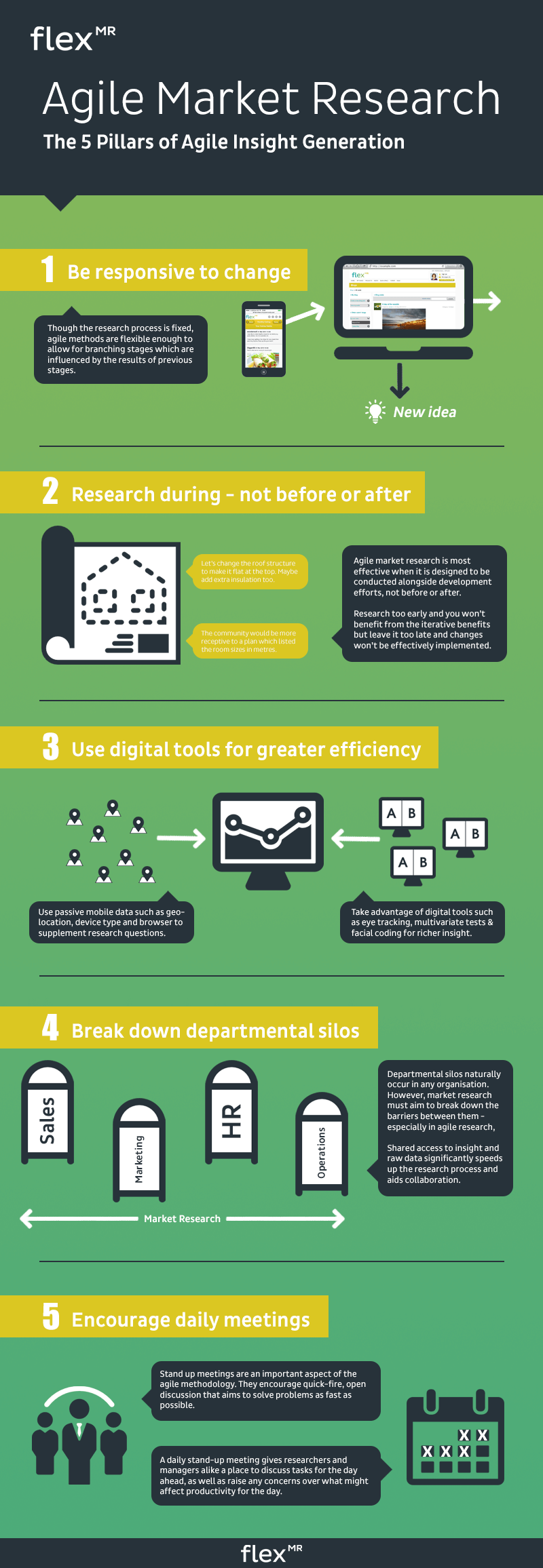What makes market research agile? It is a question that has been endlessly debated over the past few years. Since the concept of agile methodologies (or philosophies - depending on who you talk to) has gained traction in marketing circles, it has been applied to everything from research to advertising. While the effectiveness of many of these applications still have yet to be seen, it is certainly having an impact on the insight community.
Yet, despite marketed success – the definition of agile market research is still very much unknown. Some agencies claim to have developed an agile process that makes gathering data quicker & easier. Others claim that their whole business model is agile – able to gather new information in a matter of days rather than weeks.
But, before the industry gets swept away in the commotion, it’s important to take a small step back and look at the bigger picture. Not all research is agile and (more importantly) not all research should be agile. It has specific applications within the industry – most notably alongside product, service or software development. But to call an entire consumer feedback program agile is a stretch. Sure, it may be fast – but agile isn’t about speed, that’s only a by-product.
True agile research revolves around eliminating waste. That waste may come in the form of costs, time or resources. But one of the largest sources of waste is the structure of client-agency relationships. When team alignment is poor and mutual goals are not shared between the two, inefficiencies begin to emerge. This infographic highlights where wastage occurs, and suggests the 5 pillars of insight generation that must be adhered to for a successful, agile project.
Tweetable Takeaways
- Agile research must be conducted throughout development, not before or after (click to tweet)
- Market research should facilitate communication across departments (click to tweet)
- Digital tools provide the quick turnaround that agile research requires (click to tweet)
Defining the 5 Pillars of Agile Insight

How to Leverage an Agile Workforce
The strongest investment that you can make, in order to achieve agile insight, is in your research team. An appreciation of the above concepts – from an iterative research process to the role of daily stand up meetings – is a significant change to the traditional view of market research. Finding those willing to become truly agile, yet not sacrifice research quality is a difficult process. But it can be done.
Once you have an agile workforce in place, the next challenge most organisations will face is how to scale it. Unlike previous team structures, agile teams do not benefit from an increasing number of members. Instead, the organisation as a whole benefits from an increasing number of agile teams. Each team should be treated as an eco-system of its own. Adding extra members can disrupt the balance and lead to new inefficiencies.
Meanwhile, by creating new teams, an organisation is able to increase its agile research output but maintain the same high degree of efficiency. This is the biggest challenge for firms that want to make the most out of agile research.
There can, ironically, no longer be an incremental increase in research output. Instead, there must be a real, justifiable need for insight before any new investment takes place. Therefore, demonstrating the RORI (return on research investment) will become the biggest and most pressing challenge for agile researchers of the future.

















